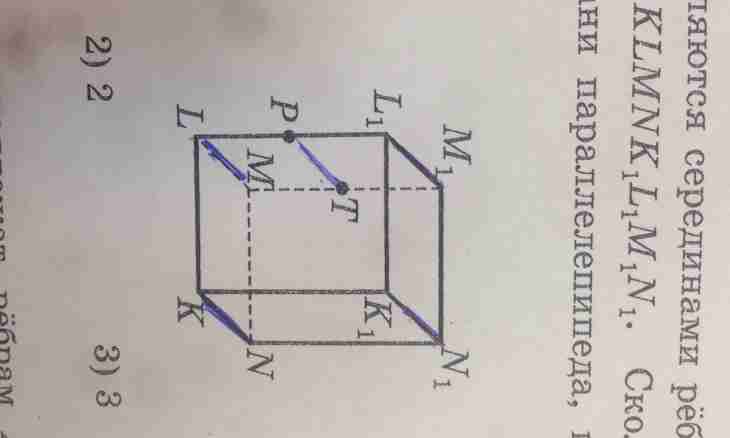Parallelepiped is called the prism which basis the parallelogram forms. Parallelograms of which the parallelepiped is made are called its sides, their parties — edges, and tops of parallelograms — parallelepiped tops.
Instruction
1. At a parallelepiped it is possible to construct four crossed diagonals. If data of three edges are known and, b and with, it is possible to find lengths of diagonals of a rectangular parallelepiped, carrying out additional constructions.
2. At first draw a rectangular parallelepiped. Sign all data known to you, them has to be three: edges and, b and page. Draw the first diagonal of m. For its construction use property of rectangular parallelepipeds according to which all corners of similar figures are straight lines.
3. Construct the diagonal of n of one of parallelepiped sides. Make construction so that the known edge (a), the unknown diagonal of a parallelepiped and diagonal of an adjacent side (n) formed a rectangular triangle and, n, m.
4. Look at the constructed diagonal of a side (n). It is a hypotenuse of other rectangular triangle of b, with, n. Following Pythagorean theorem which says that the square of a hypotenuse is equal to the sum of squares of legs (n² = with² + b²), find a hypotenuse square, then take a root square of the received value is and there will be n side diagonal length.
5. Find the diagonal of the parallelepiped of m. To find its value, in a rectangular triangle and, n, m calculate a hypotenuse on the same formula: m² = n² + a². Calculate a root square. The found result will be the first diagonal of your parallelepiped. M diagonal.
6. In the same way carry out consistently all other diagonals of a parallelepiped, for each of which carry out additional creation of diagonals of adjacent sides. Using Pythagorean theorem, find values of other diagonals of this parallelepiped.
7. There is one more way by means of which it is possible to find diagonal length. It agrees to one of properties of a parallelogram, the square of diagonal is equal to the sum of squares of three of its parties. It follows from this that length can be found having put squares of the parties of a parallelepiped and to take a square from the turned-out value.

